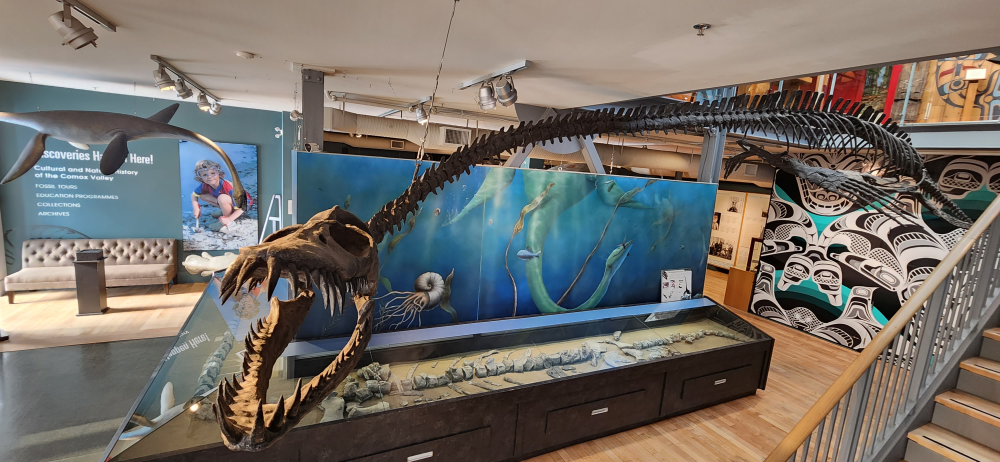A new genus of sea monster has just been officially identified, and it’s a palaeontological weirdo. The new species has been named Traskasaura sandrae, and is described as “very odd” owing to a confusing combination of seemingly primitive and comparatively modern traits. One thing’s clear, though: this thing was a killer.
Its impressive name is in honour of Heather and Michael Trask, who were the first to dig up a specimen when they discovered the holotype along the banks of the Puntledge River in 1988. It also borrows the Greek word saûros, for lizard, and sandrae is in loving memory of Sandra Lee O’Keefe (née Markey).
When they were first found, the fossils became famous. Famous enough, in fact, to become the official fossil emblem of British Columbia, but as for what they were? That took some time to narrow down.
At 12 meters (39 feet) long, it had a long neck and sharp, heavy teeth that would’ve been perfect for chomping, but there are a few ancient sea monsters that fit the brief. The available fossils also seemed to have a confusing combination of primitive and derived features.
Since the Trasks turned up the first Traskasaura holotype fossil, we’ve found a few more specimens. The idea of a new kind of sea monster was floated in the initial 2002 description of the mystery fossils, but it took a new “excellently preserved” partial skeleton to tip the scale in favor of a new genus and species of elasmosaur – ancient marine reptiles within Plesiosauria.

Museum display of Traskasaura in The Courtenay and District Museum and Palaeontology Centre.
Image credit: The Courtenay and District Museum and Palaeontology Centre
“Plesiosaur fossils have been known for decades in British Columbia,” said lead author Professor F Robin O’Keefe from Marshall University, West Virginia, in a statement. “However, the identity of the animal that left the fossils has remained a mystery, even as it were declared BC’s provincial fossil in 2023. Our new research published today finally solves this mystery.”
“The scientific confusion concerning this taxon is understandable. It has a very odd mix of primitive and derived traits. The shoulder, in particular, is unlike any other plesiosaur I have ever seen, and I have seen a few.”
Very odd though it may be, its unique suite of adaptations suggests it was very good at swimming downwards, painting a picture of a fierce predator that hunted by diving on prey from above. Its victims were most likely the abundant ammonites found here, whose shells would’ve been no match for Traskasaura’s robust teeth. A strange beast that – admittedly – looks a little like the sandworm in Beetlejuice, but one that’s also impressive.
“With the naming of Traskasaura sandrae, the Pacific Northwest finally has [a] Mesozoic reptile to call its own,” added O’Keefe. “Fittingly, a region known for its rich marine life today was host to strange and wonderful marine reptiles in the Age of Dinosaurs.”
“The fossil record is full of surprises. It is always gratifying to discover something unexpected. When I first saw the fossils and realized they represented a new taxon, I thought it might be related to other plesiosaurs from the Antarctic. My Chilean colleague Rodrigo Otero thought differently, and he was right; Traskasaura is a strange, convergently evolved, fascinating beast.”
The study is published in the Journal of Systematic Palaeontology.
Source Link: Fossil Mystery Reveals New Species Of 85-Million-Year-Old Sea Monster, And It’s “Very Odd”